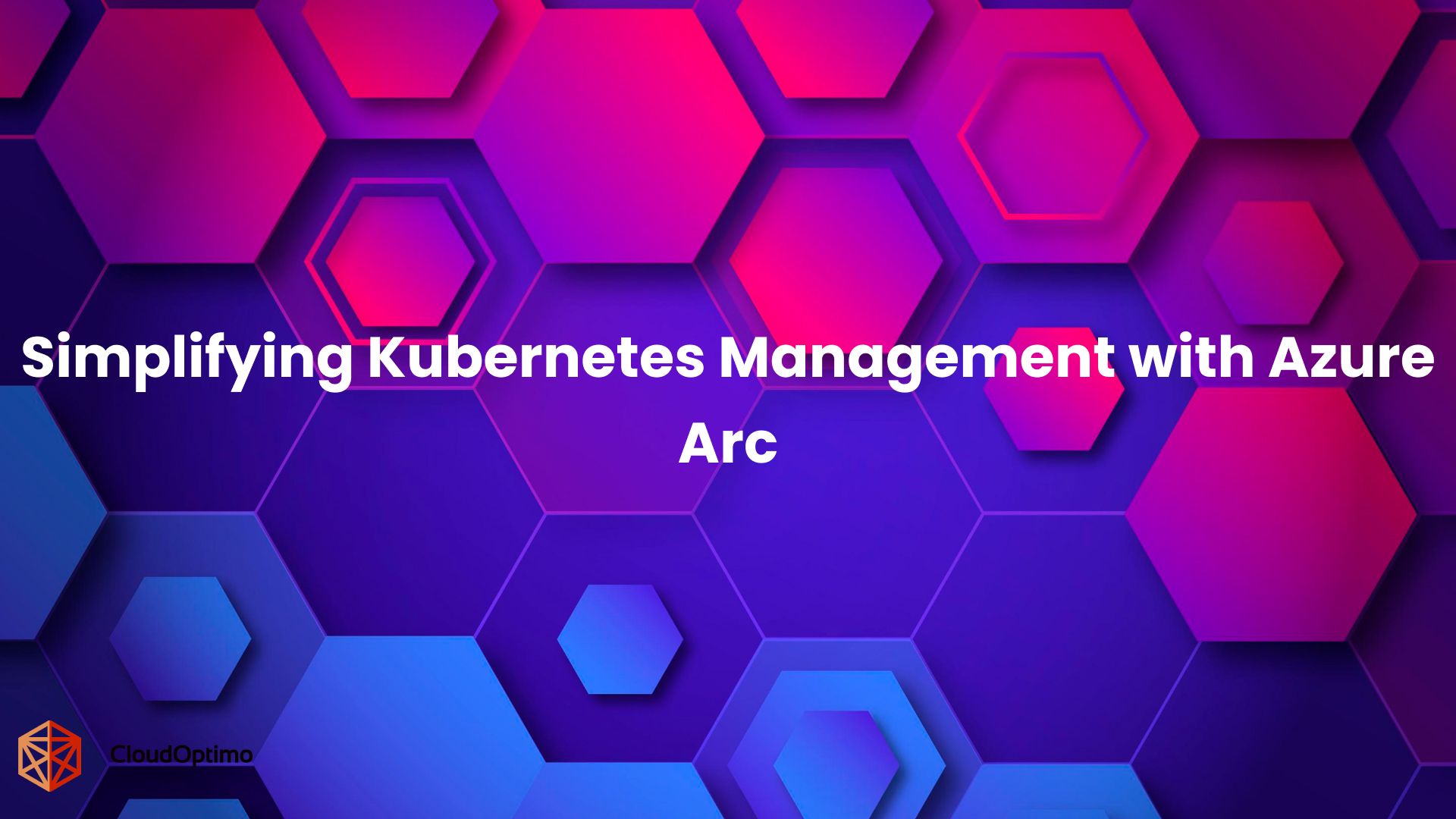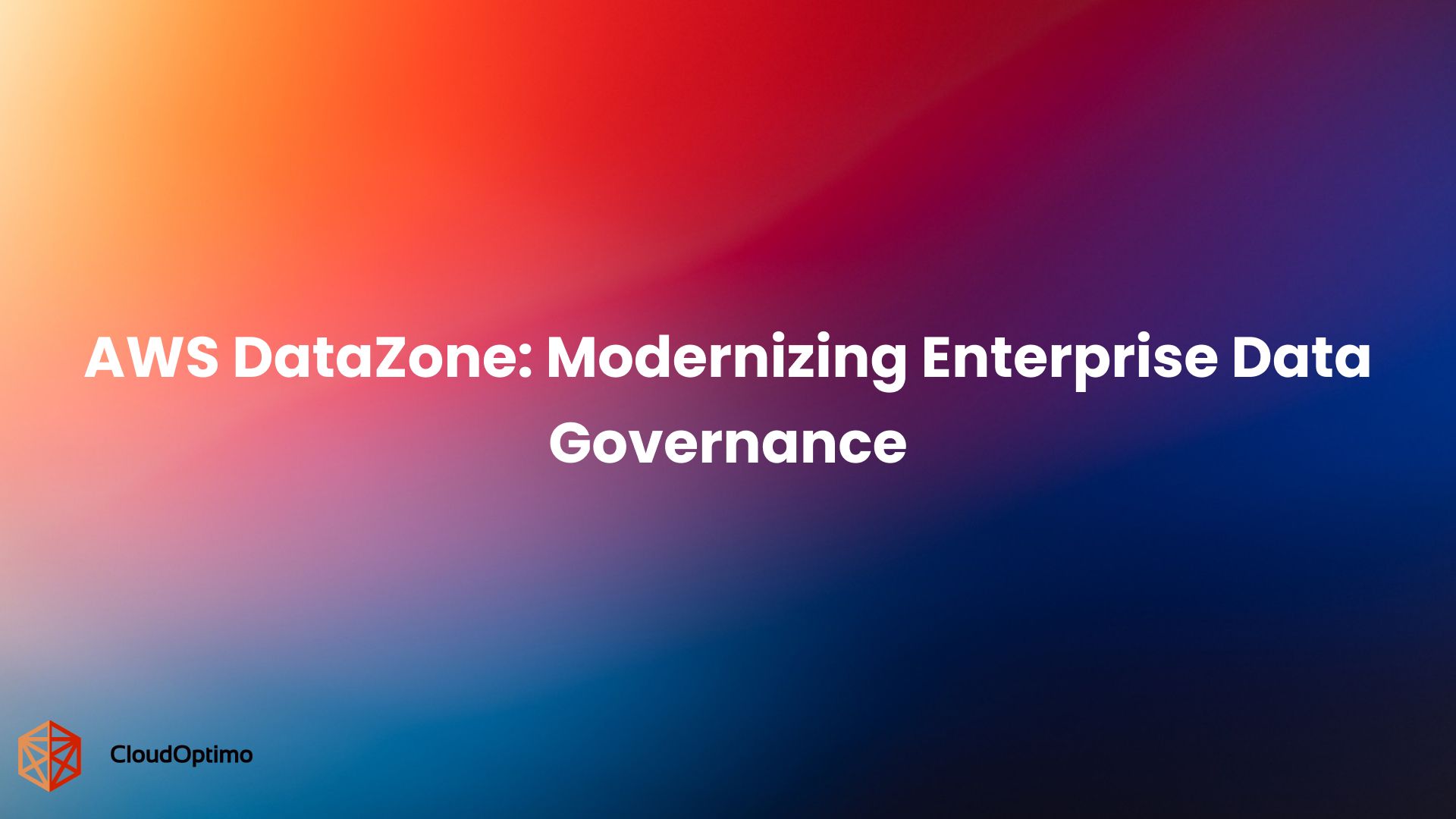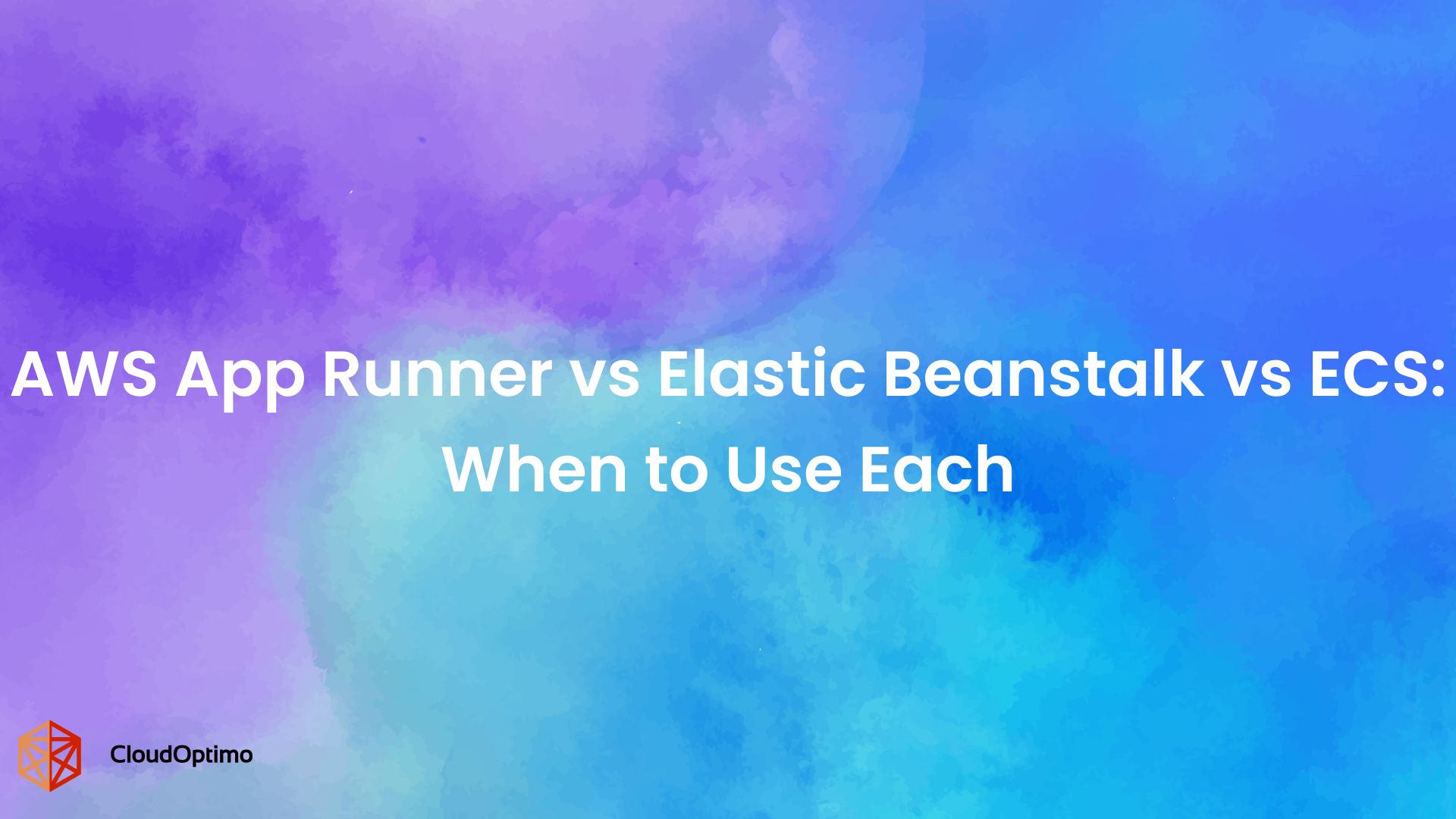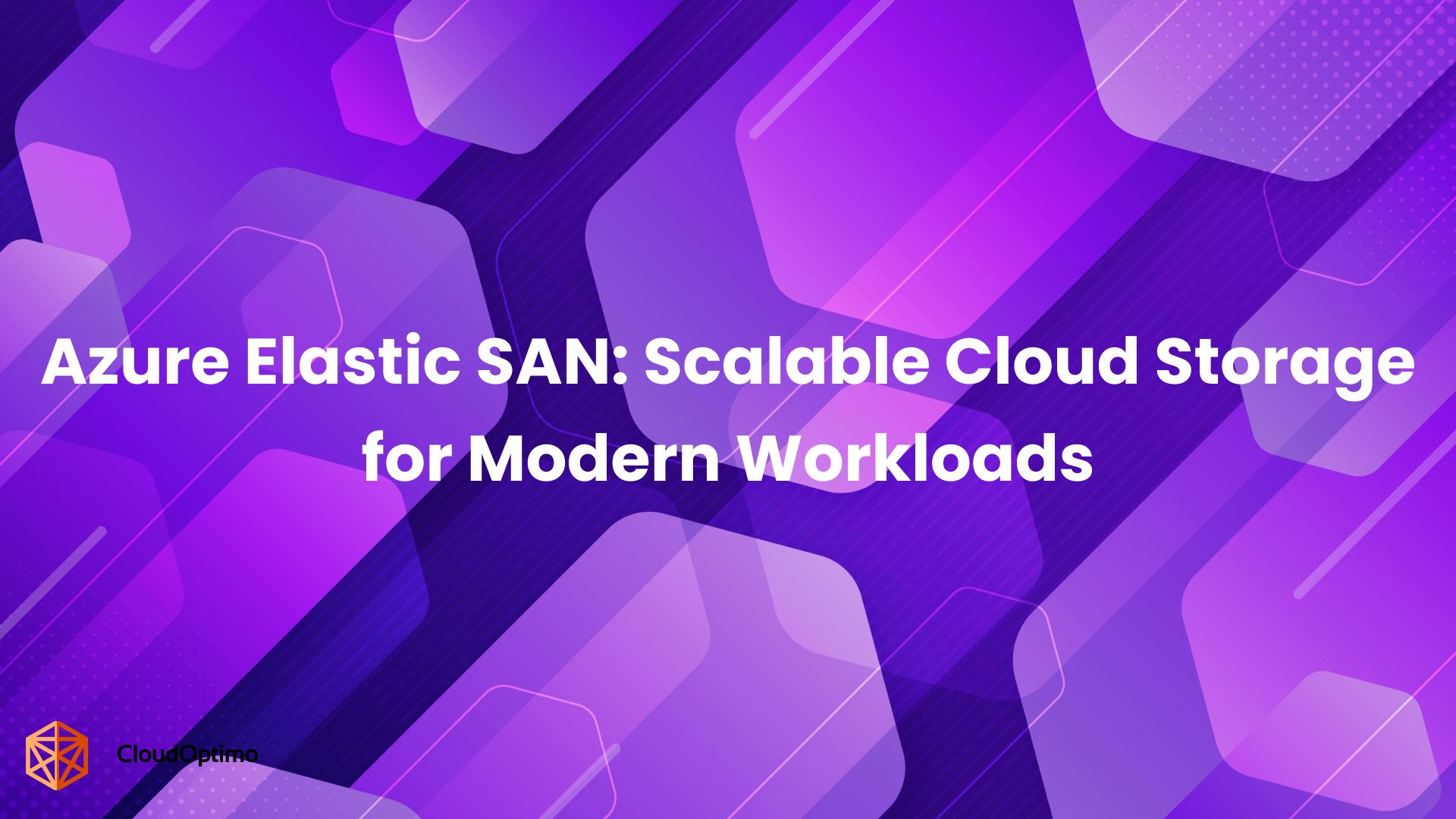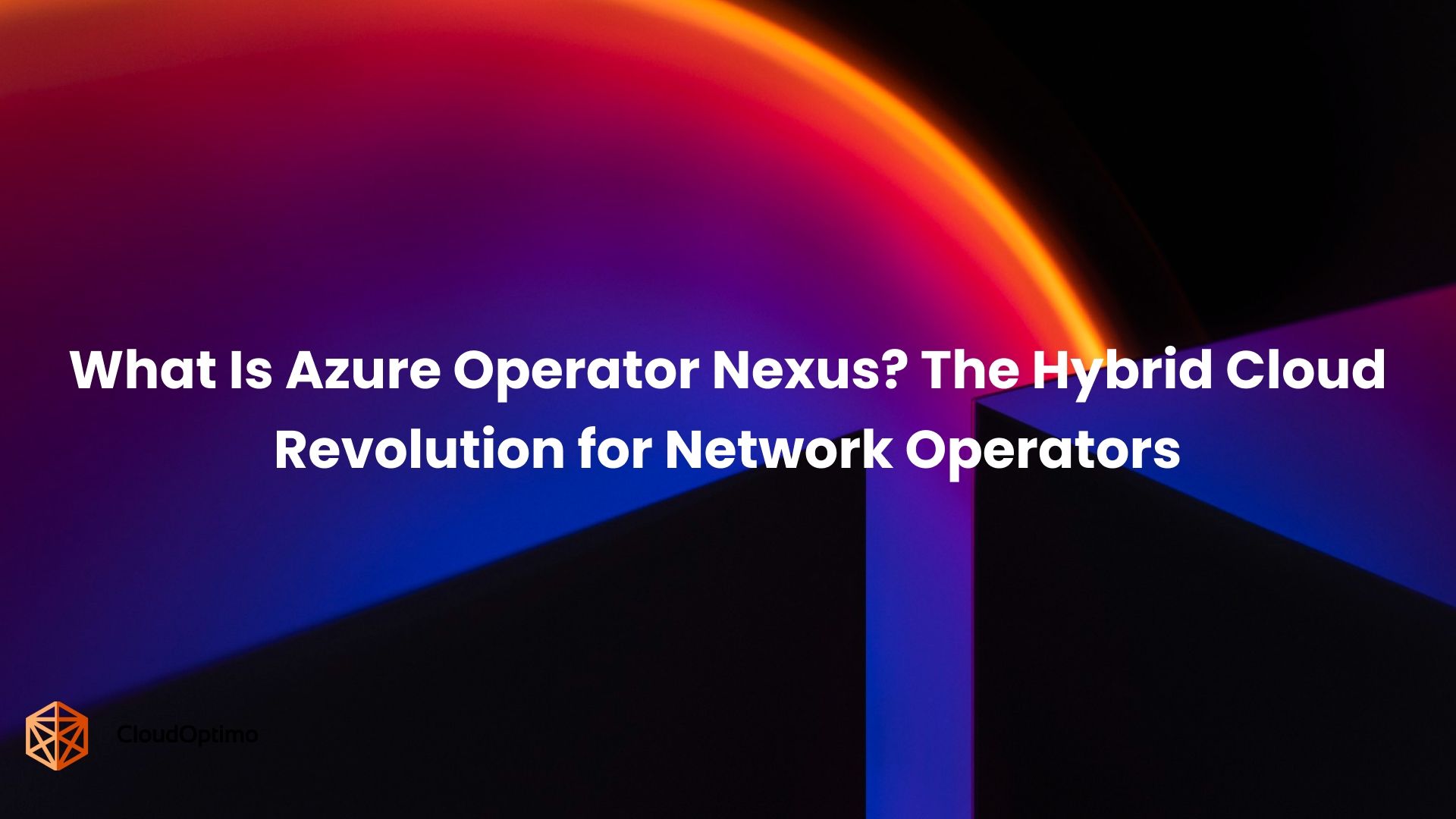Amazon Elastic Block Store (EBS) is like having virtual hard drives for your cloud servers. Just as you choose different types of physical hard drives based on your needs and budget, EBS offers various storage options with different performance levels and costs.
Whether you're running a small website or managing enterprise applications, understanding EBS pricing is crucial for controlling your cloud costs.
Why This Blog Matters?
- For Beginners: Learn how to avoid common pricing pitfalls and make informed storage decisions
- For Technical Users: Discover advanced cost optimization techniques that can reduce storage costs by up to 35%
- For Enterprises: Understand how to scale storage efficiently while maintaining performance and controlling costs
Before diving into specific prices, let's understand the key components that affect your EBS costs:
Core Cost Components
- Volume Storage: What you pay for the space you provision
- IOPS (Input/Output Operations Per Second): Speed of read/write operations
- Throughput: Amount of data transferred per second
- Snapshots: Backup storage costs
- Data Transfer: Moving data between regions or availability zones
What Are EBS Volume Types and Why They Matter?
EBS offers multiple volume types, with unique performance characteristics and pricing models. Selecting the appropriate type impacts both application performance and long-term storage costs.
General Purpose SSD (gp3)
Introduced in 2020, gp3 volumes have replaced gp2 as the go-to baseline for most workloads. Migrating from gp2 to gp3 typically results in immediate savings without compromising performance.
- Pricing: $0.08 per GB-month (us-east-1)
- Base Performance: 3,000 IOPS and 125 MiB/s throughput at no extra cost
- Scaling Options:
- Up to 16,000 IOPS at $0.005 per IOPS-month
- Up to 1,000 MiB/s throughput at $0.04 per MiB/s-month
Migration Tip:
Most workloads running on gp2 can migrate to gp3, yielding savings of up to 20%. In one real-world example, migrating production workloads reduced storage costs by $2,500 per month.The below table demonstrates the clear cost and performance advantages of migrating workloads from gp2 to gp3. This migration can reduce storage costs without compromising performance.
| Feature | gp2 | gp3 | Benefit of gp3 |
| Base IOPS | 3 IOPS per GB (up to 16,000) | 3,000 IOPS | Consistent performance regardless of size |
| IOPS Scaling Cost | No scaling | $0.005 per extra IOPS/month | Better control over IOPS cost |
| Throughput | Up to 250 MiB/s | 125 MiB/s included | Higher default throughput |
| Pricing | $0.10 per GB/month | $0.08 per GB/month | 20% cheaper by default |
Pricing Variations Across Regions
EBS pricing varies significantly across AWS regions. Here's what you need to know:
| Region | Storage (per GB/month) | IOPS (per IOPS/month) | Throughput (per MB/s/month) |
| US East (N. Virginia) | $0.08 | $0.01 | $0.04 |
| Europe (Frankfurt) | $0.10 | $0.01 | $0.05 |
| Asia Pacific (Tokyo) | $0.09 | $0.01 | $0.05 |
| South America (São Paulo) | $0.11 | $0.01 | $0.05 |
Cost Impact Example
Running a 1TB gp3 volume with 6,000 IOPS:
- In US East: $95/month
- In São Paulo: $128/month
Provisioned IOPS SSD (io2 and io2 Block Express)
Designed for mission-critical applications requiring consistent and low-latency performance, io2 volumes are often used in industries like financial services, where maintaining peak performance is essential
- Pricing: $0.125 per GB-month
- IOPS Cost: $0.065 per provisioned IOPS-month
- Key Features:
- High availability with Block Express
- Sub-millisecond latency
Optimization Insight:
Adjusting provisioned IOPS based on actual workload usage instead of peak projections resulted in monthly savings of $3,000 for one enterprise.For workloads demanding high availability and low latency, the io2 Block Express becomes essential despite its higher cost.
| Workload Type | Why io2? | Cost Optimization Strategy |
| Financial Databases | Requires high IOPS and consistent performance | Monitor peak IOPS usage to avoid over-provisioning |
| SAP/HANA Workloads | Demands low latency and high throughput | Use io2 Block Express for scalable performance |
| Video Streaming Platforms | Needs constant data read/write speeds | Enable monitoring to match IOPS to usage |
Throughput-Optimized HDD (st1) and Cold HDD (sc1)
These HDD-based options are optimized for specific workloads, such as large-scale data processing or archival storage.
- st1: $0.045 per GB-month – Ideal for big data and data warehousing
- sc1: $0.015 per GB-month – Best for backups and infrequently accessed data
Choosing between st1 and sc1 depends entirely on how frequently the data is accessed. These volumes shine in workloads with sequential reads, such as backup data or logs.
| Volume Type | Best Use Case | Storage Cost | Performance |
| st1 (Throughput-Optimized) | Big data analytics, log processing | $0.045 per GB/month | Up to 500 MiB/s throughput |
| sc1 (Cold HDD) | Archival, infrequent access | $0.015 per GB/month | Up to 250 MiB/s throughput |
Real-World Example:
A client reduced costs by 40% by offloading log files and historical data from SSDs to sc1 volumes, freeing up faster storage for active workloads.
Table for Volume Types and Pricing Overview
| Volume Type | Storage Cost (per GB/month) | IOPS Pricing | Throughput | Use Cases |
| General Purpose SSD (gp3) | $0.08 | $0.005 per IOPS/month (over 3,000 IOPS) | $0.04 per MiB/s/month (over 125 MiB/s) | Web servers, databases, boot volumes |
| Provisioned IOPS SSD (io2) | $0.13 | $0.065 per IOPS/month | 1,000 MiB/s max | Critical databases, financial apps |
| Throughput-Optimized HDD (st1) | $0.05 | Not applicable | 500 MiB/s peak | Big data, log processing |
| Cold HDD (sc1) | $0.02 | Not applicable | 250 MiB/s peak | Archival storage, cold data |
EBS-Optimized Instance Pricing
EBS-optimized instances are specifically designed to provide dedicated bandwidth for EBS (Elastic Block Store) volume traffic, ensuring optimal performance for workloads that rely heavily on disk I/O.
This feature plays a crucial role in minimizing latency and maximizing throughput for applications that demand high levels of storage performance.
Pricing Structure
- Newer Instance Types:
Many of the latest EC2 instance families, such as m5, c5, and t3, automatically come with EBS optimization enabled at no additional cost. This addition allows users to utilize the advantages of dedicated bandwidth without causing extra expenses, making these instance types appealing for new deployments. - Older Instance Types:
Legacy instance types, including m4, m3, and c3, may require users to pay extra for EBS optimization. The hourly charges for EBS optimization on these older instances are as follows:- m4.large: $0.01 per hour
- m3.xlarge: $0.02 per hour
- c3.xlarge: $0.015 per hour
- These additional costs can accumulate significantly, especially in environments with high EBS traffic.
Multi-Attach Pricing Scenarios
The Multi-Attach feature in Amazon EBS (Elastic Block Store) enables you to simultaneously attach a single EBS volume to multiple EC2 instances.
This capability is particularly beneficial for workloads that require shared access to storage, such as clustered applications or distributed databases, allowing for enhanced scalability and performance.
Cost Considerations
- No Additional Charges for Multi-Attach:
The Multi-Attach feature itself does not incur any additional fees. Users can take advantage of this capability without impacting their overall EBS pricing structure. However, it is important to note that the base volume charges still apply. - Base Volume Charges:
To utilize Multi-Attach, you must use io2 volumes, which come with specific pricing based on the size and provisioned IOPS. The base cost is calculated per GB of storage provisioned and varies depending on the AWS region. - Increased IOPS Requirements:
When multiple instances share a single volume, there will be an increase in IOPS demand. It is crucial to ensure that the provisioned IOPS on the EBS volume can handle the combined load from all attached instances. Insufficient IOPS provisioning can lead to performance bottlenecks.
Example calculation for shared volume:
Monthly Cost Calculation:
Monthly Cost = Base Volume Cost + (IOPS × Number of Instances × IOPS Rate)
- Base Volume Cost: This is calculated based on the total storage allocated to the io2 volume (in GB).
- IOPS: This represents the provisioned IOPS for the volume.
- Number of Instances: This indicates how many instances are attached to the shared volume.
- IOPS Rate: This is the cost per provisioned IOPS, which is specific to the io2 volume type.
Example Calculation:
Assume you have the following configuration:
- Base Volume Size: 100 GB
- Provisioned IOPS: 300 IOPS
- Number of Instances: 3
- IOPS Rate: $0.065 per provisioned IOPS
Monthly Cost Calculation:
- Base Volume Cost = 100 GB × $0.10 (example rate) = $10.00
- IOPS Cost = 300 IOPS × 3 Instances × $0.065 = $58.50
Thus, the Total Monthly Cost = $10.00 + $58.50 = $68.50.
Advanced Cost Calculation Examples
Scenario 1: High-Performance Database
- 2TB io2 volume
- 50,000 IOPS
- Multi-Attach enabled for 2 instances
Storage: 2,000 GB × $0.125 = $250
IOPS: 50,000 × $0.065 = $3,250
Total Monthly Cost = $3,500
Scenario 2: Data Warehouse
- 10TB st1 volume
- Frequent cross-region transfers
Storage: 10,000 GB × $0.045 = $450
Transfer (1TB/day): 30,000 GB × $0.02 = $600
Total Monthly Cost = $1,050
Hidden Costs: Snapshot Pricing and Data Transfers
While EBS volumes form the foundation of storage costs, hidden charges such as snapshot storage and data transfers can accumulate over time.
Snapshot Pricing
Snapshots store only the differences from the previous one. However, unmanaged snapshots can lead to unnecessary expenses.
- Snapshot Cost: $0.05 per GB-month (us-east-1)
- Regional Variation: Costs vary by region
Snapshot Management Strategy:
Implementing lifecycle policies can reduce snapshot costs significantly. For example:- Hourly snapshots: Retained for 24 hours
- Daily snapshots: Kept for 7 days
- Weekly snapshots: Stored for 4 weeks
- Monthly snapshots: Retained for 3 months
Automating these policies reduced a client’s snapshot storage from 4TB to 2TB, saving $500 per month.
Data Transfer Costs
Data transfers, particularly cross-region or inter-Availability Zone (AZ) transfers, can incur unexpected costs.
- Inter-AZ Transfer: $0.01 per GB
- Cross-Region Transfer: Charged per AWS data transfer rates
Best Practice:
Using EBS snapshots for replication between availability zones, rather than continuous volume mirroring, can save bandwidth and storage costs.
| Transfer Type | Cost | Best Practice |
| Inter-AZ Data Transfer | $0.01 per GB | Use EBS snapshots for replication |
| Cross-Region Transfer | Regular AWS rates | Avoid unnecessary cross-region data transfers |
| AZ-to-AZ Volume Mirroring | Can accumulate significant costs | Switch to periodic snapshots instead |
API Pricing Details
When utilizing Amazon EBS (Elastic Block Store) APIs, it is essential to understand the pricing structure associated with various API calls. Below are the detailed pricing tiers for both EBS Direct APIs and Cost Management APIs.
EBS Direct APIs
The EBS Direct APIs provide capabilities to manage and manipulate EBS snapshots and blocks. Below are the key pricing details:
- ListChangedBlocks/ListSnapshotBlocks:
- Cost: $0.0006 per 1,000 requests
- Description: These APIs are used to retrieve lists of changed blocks in an EBS snapshot, allowing efficient data synchronization and backup processes.
- GetSnapshotBlock:
- Cost: $0.0003 per 1,000 blocks returned
- Description: This API call retrieves specific blocks from a snapshot, making it useful for restoring data or creating incremental backups.
- PutSnapshotBlock:
- Cost: $0.006 per 1,000 blocks written
- Description: This API is used to write blocks to a snapshot, which is crucial for creating or updating backups.
- ListChangedBlocks/ListSnapshotBlocks:
Cost Management APIs
Cost Management APIs help users analyze and manage their AWS spending effectively. Here are the pricing details:
- Cost Explorer API:
- Cost: $0.01 per API call
- Description: This API provides insights into your AWS spending patterns, allowing you to explore costs over time, set budgets, and identify cost-saving opportunities.
- Price List API:
- Cost: Free
- Description: This API enables users to access up-to-date pricing information for all AWS services, making it easier to estimate costs and plan budgets without incurring any fees.
- Cost Explorer API:
Cost Optimization Strategies
To effectively manage and optimize AWS EBS costs, consider the following strategies:
- Implement Cost Allocation Tags: Use detailed tags to track EBS usage and spending, allowing for better visibility and control over costs.
- Leverage EBS-Optimized Instances: Ensure that your EC2 instances are optimized for EBS performance to minimize latency and maximize throughput, ultimately reducing costs associated with inefficiencies.
- Conduct Regular Volume Audits: Identify and eliminate orphaned EBS volumes—those that are no longer attached to any EC2 instances—thus preventing unnecessary charges.
- Monitor Snapshot Usage: Regularly detect unused EBS snapshots, which can accumulate over time and lead to unexpected costs. Consider implementing policies for snapshot retention.
- Evaluate Volume Utilization: Analyze the performance of your EBS volumes to detect overused or underused volumes. This will help ensure that resources are allocated effectively, avoiding waste.
- Assess EC2 Instances: Regularly review your EC2 instances to identify any unused ones that may be incurring costs unnecessarily.
Key Cost Optimization Techniques for EBS
Right-Sizing Volumes Through Monitoring
Regular monitoring helps identify oversized volumes. AWS CloudWatch provides key metrics such as IOPS, throughput, and read/write operations to guide the right-sizing process. Here's a practical approach to right-sizing:
Sample Code for CloudWatch Analysis:
| import boto3 from datetime import datetime, timedelta def analyze_volume_usage(volume_id, days=30): cloudwatch = boto3.client('cloudwatch') metrics = cloudwatch.get_metric_statistics( Namespace='AWS/EBS', MetricName='VolumeReadOps', Dimensions=[{'Name': 'VolumeId', 'Value': volume_id}], StartTime=datetime.now() - timedelta(days=days), EndTime=datetime.now(), Period=3600, Statistics=['Average'] ) return metrics volume_metrics = analyze_volume_usage('vol-12345678') print(volume_metrics) |
Automated Volume Type Conversion
Switching to cost-effective volume types requires structured planning.
Analysis Phase
Analyze usage patterns and calculate savings potential
- Monitor IOPS usage patterns
- Calculate cost implications
- Identify conversion candidates
Testing Phase
Test the new configuration on sample volumes
- Create test volumes with new configuration
- Validate performance metrics
- Document baseline comparisons
Implementation Phase
Implement during maintenance windows and validate post-migration performance
- Schedule maintenance windows
- Execute conversions
- Verify application performance
Snapshot Management Automation
Automating snapshot cleanup helps eliminate redundant data and minimize costs.
Code Snippet for Automated Cleanup:
| def cleanup_snapshots(retention_days=7): ec2 = boto3.client('ec2') snapshots = ec2.describe_snapshots(OwnerIds=['self']) for snapshot in snapshots['Snapshots']: age = datetime.now() - snapshot['StartTime'] if age.days > retention_days: try: ec2.delete_snapshot(SnapshotId=snapshot['SnapshotId']) print(f"Deleted snapshot {snapshot['SnapshotId']}") except Exception as e: print(f"Error: {str(e)}") |
Advanced Cost Optimization Techniques
AWS Lifecycle Manager
To optimize the utilization of AWS EBS Lifecycle Manager, the following best practices are recommended based on extensive implementation experience:
- AWS Backup Integration
In enterprise environments, establishing a robust backup strategy is crucial and should include:- Detailed Cost Allocation Tags: Implementing precise tagging enhances financial visibility and accountability across the organization.
- Cross-Account Snapshot Sharing: Facilitating seamless backup processes by enabling snapshot sharing across multiple AWS accounts.
- Organization-Wide Backup Policies: Instituting comprehensive backup policies ensures data integrity, compliance, and consistency across all organizational units.
Kubernetes Integration
In Kubernetes environments, dynamic volume provisioning is essential. This strategy allows for storage allocation to occur only when necessary, significantly minimizing resource waste and optimizing cost efficiency.
Future-Proofing Your EBS Cost Strategy
Emerging Trends and Considerations
- Multi-Attach Capabilities
- Cost implications of shared volumes
- Performance considerations in multi-attach scenarios
- Integration with AWS Backup
- Centralized backup management
- Cross-region backup strategies
- Kubernetes Integration
- Dynamic volume provisioning
- Storage class optimization
Case Study
Let's look at a practical example from a recent project:
Initial Setup:
- 50 gp2 volumes (1TB each)
- No snapshot lifecycle policy
- Monthly Cost: $10,000
Optimization Measures:
- Migrated volumes to gp3
- Implemented snapshot lifecycle policies
- Introduced automated monitoring and right-sizing
Final Result:
- Monthly Cost: $6,500
- Savings: 35%
| Scenario | Before Optimization | After Optimization |
| Volume Types | 50 gp2 volumes (1 TB each) | Converted to gp3 volumes |
| Snapshot Policy | No policy, frequent manual snapshots | Automated lifecycle management |
| Monthly Cost | $10,000 | $6,500 |
| Savings | - | 35% reduction |
Optimizing EBS pricing requires a blend of technical insight and proactive management. Key strategies include:
- Choosing the appropriate volume types
- Monitoring usage for right-sizing opportunities
- Automating snapshot cleanup
- Minimizing data transfer costs
Future Trends in EBS Pricing
- Multi-Attach Expansion
- Predicted cost reduction for shared volume access
- New pricing models for concurrent access
- Integration Improvements
- Simplified backup pricing across services
- Enhanced cost monitoring tools
- Performance Tiers
- More granular IOPS pricing
- New volume types for specific workloads
Regular audits and continuous adjustments ensure that EBS infrastructure remains cost-effective and aligned with business objectives. As a best practice, regularly cleaning up unused volumes and obsolete snapshots prevents unnecessary expenses, as the most cost-effective storage is the storage that isn’t used.
FAQs
Q: How are IOPS calculated and billed?
A: IOPS are measured in 256KB chunks. Operations larger than 256KB are counted as multiple I/O operations.
Q: What is the difference between EBS snapshots and EBS volumes?
A: EBS volumes are the primary storage devices attached to EC2 instances, while EBS snapshots are backups of those volumes stored in Amazon S3, which can be used for data recovery.
Q: Are EBS volumes encrypted?
A: Yes, AWS provides the option to encrypt EBS volumes using AWS Key Management Service (KMS), which helps secure your data at rest and in transit.
Q: Can I change the volume type of an existing EBS volume?
A: Yes, you can modify the volume type of an existing EBS volume on the fly without detaching it from the EC2 instance, which allows for flexibility as your needs change.
Q: Are there any performance limits on EBS snapshots?
A: While creating a snapshot, there may be a temporary reduction in performance for the EBS volume. However, this impact is usually minimal and should not significantly affect application performance.

